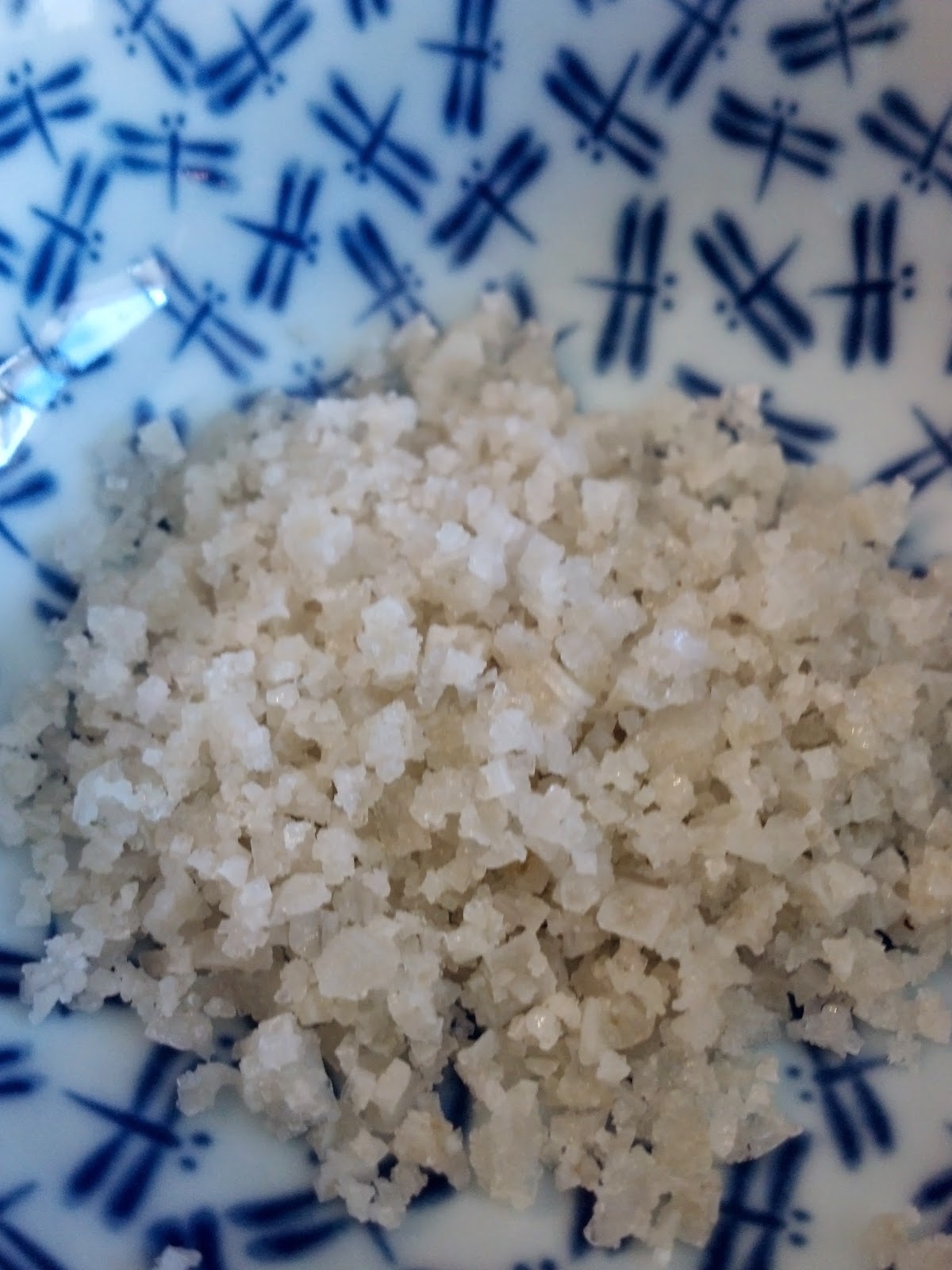Though I was born in Hawai'i, I didn't have poke (Hawaiian raw fish, pronounce poh-kay) until I was an adult. By far the two best poke I've ever had was the Costco in Lihue (really!) and the sea asparagus salmon poke at Overland Meat & Seafood in South Lake Tahoe. Makes me want to go forage in a salt marsh!
 |
| Local, wild sustainably caught Chinook King salmon |
I made poke for the first time last year and it's become my daughter's favorite food; she refuses to eat cooked salmon anymore, more's the shame, so now we cook all salmon rare. It's April and Chinook King salmon are back in season which means BREAK IT DOWN: STOP, POKE TIME!
As far as seaweed goes, I prefer sea asparagus (actually a sort of salt marsh succulent)--which can be eaten raw or blanched--and/or wakame. I happened to have hijiki on hand which works fine; the texture almost as crisp as salicornia, but the taste is a little more "earthy" than other seaweed. When I buy dried, I go by the picture and choose a seaweed that is in a salad or dry dish over soup seaweed.
Note that "sushi grade" is not a regulated designation. To avoid contamination, source only fresh wild-caught or sustainably farmed fish from a reputable, sustainable fishmonger and freeze at least 12 hours to kill bacteria and parasites. Thaw the salmon in the fridge for about 4 hours. Cut while it is still icy, but pliable. I've substituted other ocean fish like halibut or swordfish as well.
 |
| Ingredients & tools |
I picked up fishbone tweezers from Daiso (The Japanese "yen" store where everything's $1.50) to pick out any pinbones And I eschew our expensive Chicago cutlery knives in favor of my trusty Thai-made Kiwi knife (under $3 at the Asian market) which just stays sharper. Kiwi knives can be sharpened the old school way using the bottom of a ceramic bowl or with any knife sharpener. (Also, my aesthetic aspiration is one day, my bowls will all match.)
Ingredients:
 |
| I like the briny pops of coarse grey salt. |
- 1 fillet of salmon (~1.5 lbs), semi-thawed
- 1 cup kelp (wakame/miyeok, hijiki,etc) or sea asparagus (salicornia)
- 1 large hass avocado
- 3-4 tbs toasted sesame oil
- splash of rice vinegar
- coarse grey or celtic sea salt
- 3 tbs toasted unhulled sesame seeds
- optional 1 tsp kombu powder
- optional splash of gunmaijen sake
- optional kanzuri paste (see comment below)*
If using dried seaweed, soak it for 30 minutes in room temperature water until reconstituted. If using fresh seaweed, rinse thoroughly.

Use the tweezers to remove any pin bones. Remove any skin. I do this my laying the fillet skin side down. I slice down along any whitish tissue (on the left of the fillet pictured above) along the dorsal fin side removing it from the fillet without cutting through the skin. Then I slice horizontally as close to the skin as I can. Reserve the salmon skin. Cube the salmon into 1/2 inch squares and put into a bowl.
 |
| Chinook wakame poke for lunch! |
Cube the avocado and add to the salmon bowl.
Add toasted sesame oil, kombu powder, and 2 tbs of grey sea salt and toss together until mixed. Cover with a plate and refrigerate for 20-30 minutes.
Just prior to serving, add sesame seeds and another 1-2 tbs of coarse grey salt to taste. Mix thoroughly.
Serve with kanzuri paste* as a condiment so folks can customize the heat factor.
Poke can be served over salad. My daughter likes to roll them up in korean toasted laver (kim) with brown rice and eat them like little kimbap/sushi rolls.
The remaining salmon skin can be cut into strips and lightly brushed with sesame oil and fried til crispy. Sprinkle with sea salt and eat as you please.
Ăn Ngon Lành | Eat Delectably!
Pokemon slow jam
*Kanzuri (かんずり) is a fermented paste of red chili / chile pepper, rice malt (koji), yuzu and salt produced in Niigata, Japan. The peppers are harvested, salted and left to begin fermenting in the snow, then they are mixed with the other ingredients and aged for 3 years to produce the finished paste. It's difficult to find stateside and I haven't seen it online at all. Marukai Market imports it. It's expensive and a little bit goes a long way. It adds a bright citrus and japanese pepper note to the dish. Yuzu paste is easier to source by contrast and would make an acceptable (very citrusy, not spicy) substitute. Or you can use your choice of chile pepper flakes. I favor Frontier organic chipotle powder myself, smoky is always a delicious note. I also use Organic Harvest Foods chipotle habanero hot sauce because I love chipotle.




No comments:
Post a Comment
I'd love to hear from you! How did yours turn out? Comment below or email me realfoodrealpho @ gmail.com.